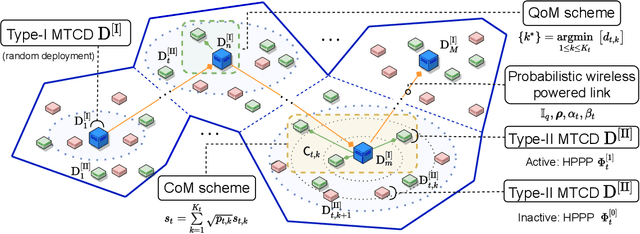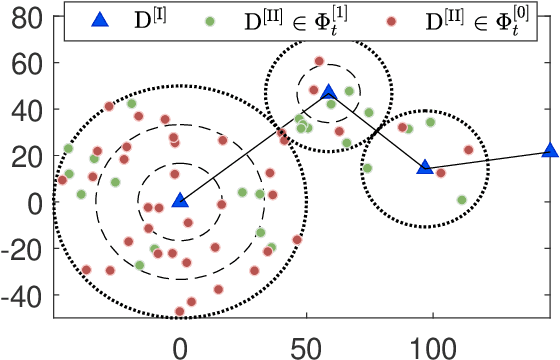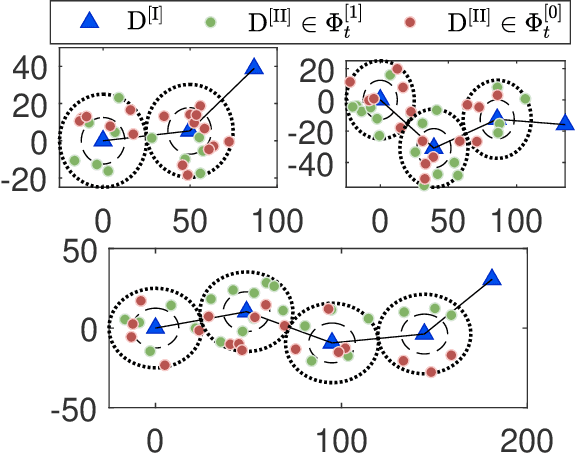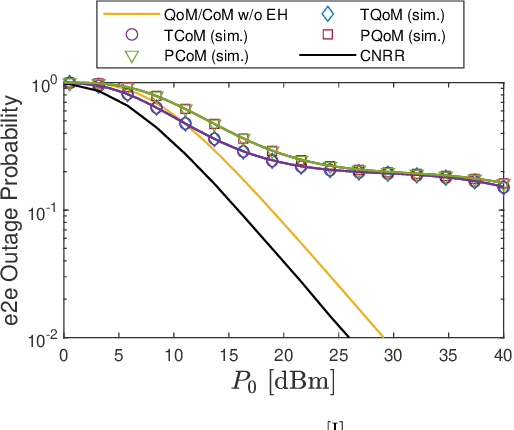Thanh-Luan Nguyen
Performance Analysis of Multi-user NOMA Wireless-Powered mMTC Networks: A Stochastic Geometry Approach
Jan 13, 2022



Abstract:In this paper, we aim to improve the connectivity, scalability, and energy efficiency of machine-type communication (MTC) networks with different types of MTC devices (MTCDs), namely Type-I and Type-II MTCDs, which have different communication purposes. To this end, we propose two transmission schemes called connectivity-oriented machine-type communication (CoM) and quality-oriented machine-type communication (QoM), which take into account the stochastic geometry-based deployment and the random active/inactive status of MTCDs. Specifically, in the proposed schemes, the active Type-I MTCDs operate using a novel Bernoulli random process-based simultaneous wireless information and power transfer (SWIPT) architecture. Next, utilizing multi-user power-domain non-orthogonal multiple access (PD-NOMA), each active Type-I MTCD can simultaneously communicate with another Type-I MTCD and a scalable number of Type-II MTCDs. In the performance analysis of the proposed schemes, we prove that the true distribution of the received power at a Type-II MTCD in the QoM scheme can be approximated by the Singh-Maddala distribution. Exploiting this unique statistical finding, we derive approximate closed-form expressions for the outage probability (OP) and sum-throughput of massive MTC (mMTC) networks. Through numerical results, we show that the proposed schemes provide a considerable sum-throughput gain over conventional mMTC networks.
 Add to Chrome
Add to Chrome Add to Firefox
Add to Firefox Add to Edge
Add to Edge